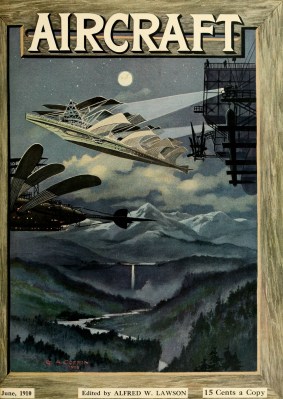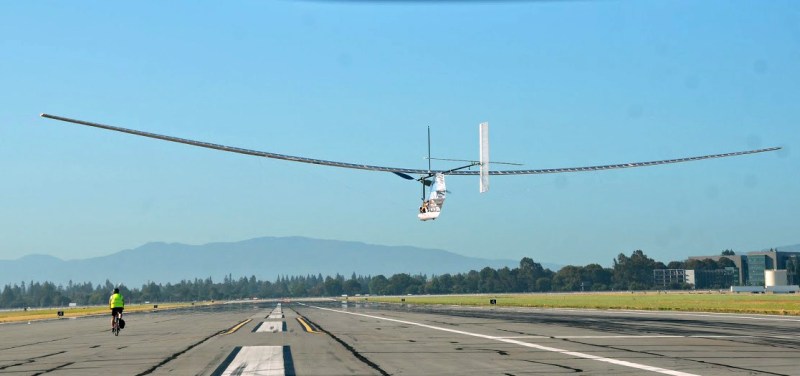We were all glued to our screens for a moment a few weeks ago, watching the Scaled Composites Stratolaunch dual-fuselage space launch platform aircraft make its first flight. The six-engined aircraft represents an impressive technical feat by any standard, and with a wingspan of 385 ft (117 m) and payload weight of 550,000 lb (250 t), is touted as the largest ever flown.
Our own Brian Benchoff took a look at the possibility of hauling more mundane cargo as an alternative (and possibly more popular) use of its lifting capabilities. And in doing so mentioned that “by most measure that matter” this is the largest aircraft ever built. There are several contenders for the title of largest aircraft that depend upon different statistics, so which one really is the largest? Sometimes it’s not as clear as you’d think, but finding out leads us into a fascinating review of some unusual aeronautical engineering.
![The Antonov 225 in flight. Alex Beltyukov [CC BY-SA 3.0]](https://hackaday.com/wp-content/uploads/2019/04/Antonov_An-225_Beltyukov-1.jpg?w=400)
The history of flight has been marked by a succession of achievements and broken records ever since a pair of Frenchmen climbed aboard a Montgolfier balloon in 1783. Sometimes there have been parallel achievements, and credit can go to different people depending on where in the world you live. But it has been rare for one record to be broken alone. Multiple competing efforts have always spurred the development of rivals, so any given crown will always have a number of contenders for it.
So, back to the Stratolaunch. It has the largest wingspan of any aircraft flown, but is it really the largest aircraft? The answer’s a little complex, and depends on how you classify your aircraft.
Until this month, asking a Hackaday reader what the largest aircraft was would have elicited a straightforward answer. The Antonov AN225 Mriya was produced in the 1980s as the ultimate progression of a string of large Soviet transport aircraft. It was conceived as a transporter for the Soviet space programme and also with an eye for use as an aerial launch platform, and has a distinctive split tailplane to accommodate the turbulence caused by a load such as a Buran spacecraft mounted upon its roof. The Antonov company now has its home in modern-day Ukraine, and the sole completed AN225 now serves as a commercial aircraft traveling the world with the market for extreme-sized air freight all to itself. Its wingspan at 290 ft (88.4 m) leaves it well behind the Stratolauncher, but its 275 ft 7 in (84m) length and 559,580 lb (253.8t) payload capacity both exceed those of the American craft. So the Ukrainians have the larger aircraft. But so do the Americans, so at this point we enter the realm of international rivalries, and reading further into the subject, some pretty fascinating aircraft.

The history of very large fixed-wing aircraft is a long one, with contenders stretching back to the first couple of decades of powered flight. At the time futurologists had visions of aircraft following the same trajectory as ships and becoming ever more massive, so it was natural that a generation of monster aircraft would emerge in the years following the First World War. Flight iconography was all the rage in contemporary design, and being the first to have a contender for the world’s largest aircraft became a source of national pride. Giant aircraft such as Germany’s Dornier Do X seaplane or the Soviet Union’s Tupolev ANT-20 were the last word in aeronautical development, and governments and aircraft manufacturers across the world scrambled to build their own prototype monster craft through the 1930s.
The demands of a global conflict by the end of that decade necessitated series-production heavy bombers and transport aircraft rather than prototype luxury airliners, so the largest aircraft of WWII were fewer in number and saw little action. Probably the most famous of all of them was conceived as a wartime transport but not completed until 1947. The Hughes H4 Hercules, “Spruce Goose” flying boat was conceived as a long-distance transport aircraft for the American military able to move up to 750 troops or two tanks across the Atlantic, and with a 320 ft 11 in (97.54 m) wingspan it comfortably exceeded all large aircraft contenders until the Stratolauncher, and though it has now been surpassed by all measures it remains a genuine holder of the largest aircraft title. Contrary to popular legend it is not made of spruce, instead employing a birch composite for lightness and economy of wartime aluminium use.
![The Airbus A380 airliner at its launch. Xeper[CC BY-SA 3.0]](https://hackaday.com/wp-content/uploads/2019/04/1280px-A380_Reveal_1.jpg?w=400)
We’re used to the bigger single-fuselage jet-engined aircraft as our reference point for size, because post-war large aircraft development since the ill-fated de Haviland Comet 1 airliner in 1949 has in most cases followed that course. Of these the AN225 is the largest by far, but should we also discount the Airbus A380 airliner with its huge 853-passenger capacity or the Boeing 747-8 which is the world’s longest passenger aircraft? Or how about the various special-purpose manufacturer transport aircraft, Airbus’ Beluga XL fleet, or the Boeing Dreamlifters? Boeing, Airbus, Antonov, and the Scaled Composites all have a stake of their own in the largest aircraft race, with Hughes as a strong cultural reference. Perhaps it is best to be very careful in qualifying any statements about aircraft size, and to tread carefully among your international friends. Where this is being written we’d vote for the Ukrainians on sheer lifting ability, though for sheer lying-outside-the-perimeter-fence large aircraft awesomeness we’d stick with Uncle Sam’s tax dollars and the fearsome spectacle of a Boeing B-52H giving it some throttle on summer exercises at RAF Fairford. You definitely have to be there!

One of the most interesting parts of writing this piece has surprisingly not come from the behemoth aircraft listed above, but from learning about the other largest aircraft, those largest of a particular type. Watching YouTube videos of the Antonov AN-2 for example, the largest mass-produced single-engined biplane, whose unique wing design delivers a capability for seemingly impossibly slow flight. Or the Solar Impulse 2 solar-electric circumnavigation aircraft, which we’re giving the crown of largest electric manned aircraft based on its 71.9 m (236 ft) wingspan but are prepared to be proved wrong by readers with greater knowledge. Sometimes with experimental aircraft it can even be difficult to ascertain which is the largest, we think the DaSH PA with its around 40-metre wingspan is the largest human-powered aircraft, but understandably in that field the designers are more concerned with performance or simply getting airborne in the first place than they are with size records.
Perhaps there is a lesson to be taken from the solar- and human-powered aircraft in all of this. With so many contenders for the title of largest aircraft, should we even be rating these craft on their size alone? They all represent astounding achievements of extreme engineering and material science in their own ways, so not one of them is less worthy of our excitement than any other. Instead we should be keenly looking forwards, because if one organisation, company, or country claims the title of largest aircraft, there is sure to be another exciting craft from another source in the works vying to take away its crown. And that is what keeps us here at Hackaday coming back for more.
Header image, Scaled Composites Stratolauncher, Robert Sullivan [No restrictions]
Who Really Has The Largest Aircraft?
Source: HackADay